Looking for a respite from the news? You might find solace in reading.
CHECK OUT THESE TITLES—SEARCH IN CLOUDLIBRARY FROM THE LINK ON OUR WEBPAGE OR EXPLORE “READ ALIKES” USING NOVELIST PLUS IN THE DIGITAL MAINE LIBRARY—ALSO A LINK ON OUR WEBPAGE.
By Elisabeth Egan and Tina Jordan
- March 18, 2020 The New York Times
- Authors are just like the rest of us — they like to soothe their anxieties by losing themselves in the pages of a beloved book. Here are some of the ones they turn to when times get tough.
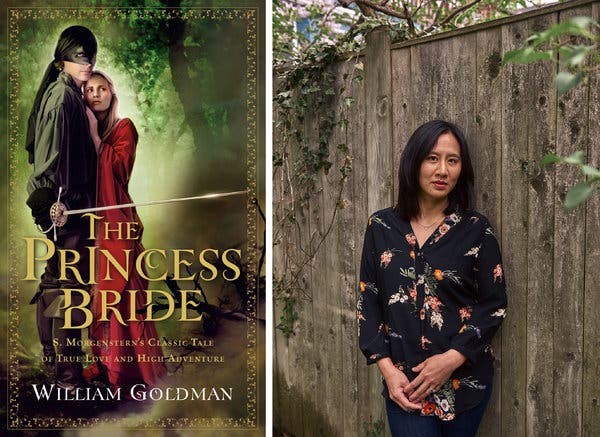
Credit…Tony Luong for The New York Times
Celeste Ng
‘The Princess Bride,’ by William Goldman
In 1987, my sister was halfway through reading me “The Princess Bride” when she went off to college. The day she left, I cried myself to sleep — and then, after I got my bearings again, I read the rest of the book on my own. So this has always been a comfort read for me: a fairy tale that acknowledges that life isn’t fair (“It’s just fairer than death, that’s all”) yet still manages to make you feel that the good guys might win, that justice will be served, that there’s a point to it all. If you only know the (fantastic) film, pick the book up, too — it’s just as much of a delight. —Celeste Ng’s most recent book is “Little Fires Everywhere.”
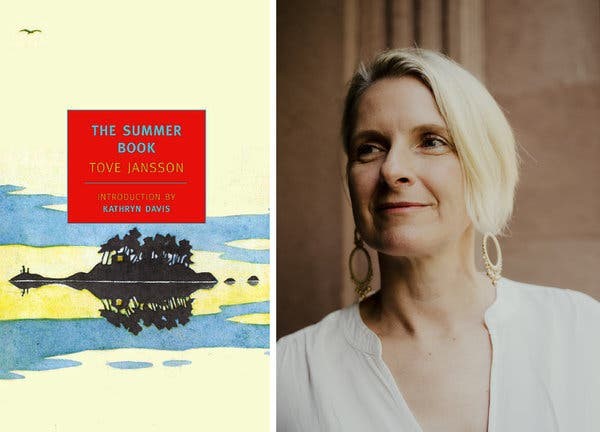
Elizabeth Gilbert
‘The Summer Book,’ by Tove Jansson
I would suggest “The Summer Book,” by Tove Jansson. This slim, magical, life-affirming novel tells the story of a young girl and her grandmother, who spend their summer together on a small, isolated island in the Gulf of Finland. Absent of sentimentality, full of love and humor and wisdom, this is a tale about how much fun two people can have in the middle of nowhere, when they are practicing social isolation in earnest. —Elizabeth Gilbert’s latest novel is “City of Girls.”
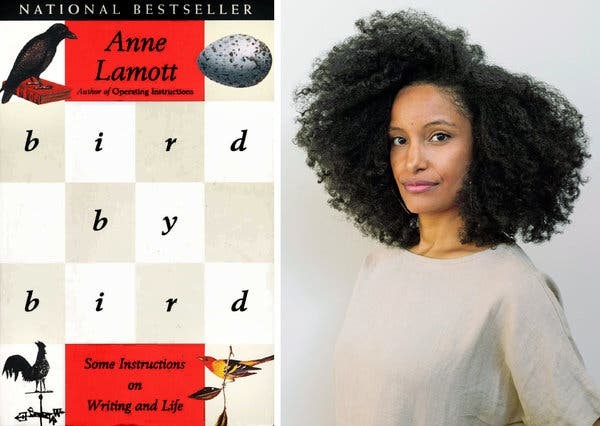
Kiley Reid
‘Bird by Bird,’ by Anne Lamott
This is a book about writing, but truly, “Bird By Bird” is about taking your time. It’s funny and honest and comforting, and it’s a wonderful reminder of the glory in terrible first efforts, and the beauty that comes in taking it day by day. —Kiley Reid’s debut novel, “Such a Fun Age,” was published earlier this year.

Credit…Winky Lewis
Lily King
‘I Capture the Castle,’ by Dodie Smith
It turns out my literary comforts have mostly been brought to me by British women.
When I was younger I always read “Pride and Prejudice” after a heartbreak, but I think it’s an all-purpose comfort novel, with so much humor and love of all kinds. I adore “Sense and Sensibility” just as much, and for the same reasons.
“I Capture the Castle,” by Dodie Smith, is pure delight, and also a bit of a quarantine book, with two sisters isolated in a small rundown castle in the 1930s with their blocked-writer father and loony stepmother — until two eligible young men come to visit their country house down the road. “Major Pettigrew’s Last Stand,” by Helen Simonson, is another deep pleasure read set in modern-day England, with occasional nods to Austen and Forster but very much its own delightful story. Speaking of Forster: “A Room with A View.” Of course. Italy, violets, the mackintosh squares. And I loved Ali Smith’s “Autumn,” a stunning and wrenching celebration of deep and lasting human connection. For warmth and laughs and brilliant observations in nonfiction, you have to read “Love, Nina,” a collection of Nina Stibbe’s real letters over a five-year period in the ’80s when she left rural Leicestershire to work as a nanny for a literary editor in London. It’s laugh-out-loud funny, and would actually be great read aloud. —Lily King’s latest book is “Writers & Lovers.”
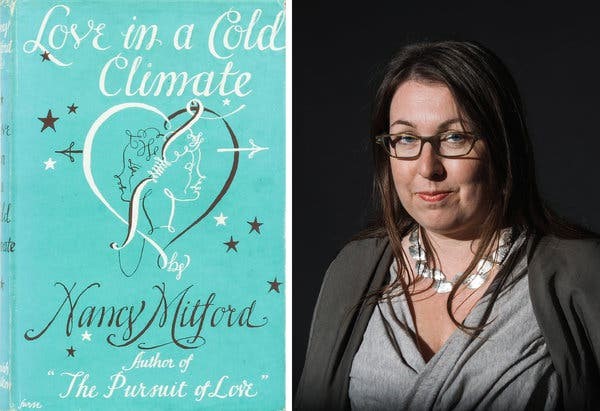
Credit…Simone Padovani/Getty Images
Ruth Ware
‘Love in a Cold Climate,’ by Nancy Mitford
For me, comfort reading is as often comfort listening — because it’s so often in the silence of a long car journey or a solo walk that your thoughts start spiraling. Agatha Christie for the reassurance that even murder can be fixed. Patrick O’Brian for putting petty, modern gripes into historical perspective. But for sheer comfort reading it has to be Nancy Mitford — who laughed and wept her way through love, loss, crippling bereavement and two world wars. When “Love in a Cold Climate” fails to make me laugh and cry, the end really will be nigh. —Ruth Ware’s most recent novel is “The Turn of the Key.”
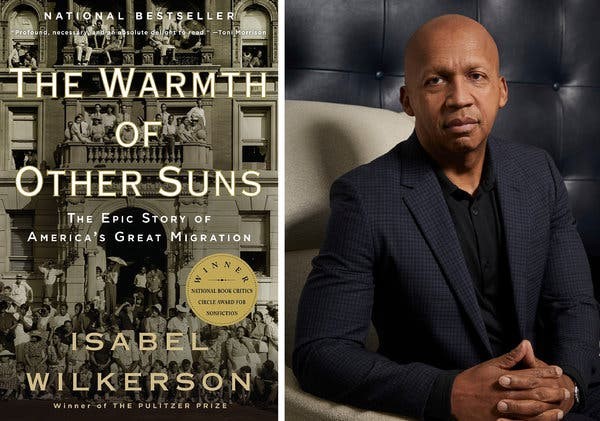
Bryan Stevenson
‘The Warmth of Other Suns,’ by Isabel Wilkerson
In “The Warmth of Other Suns,” racial terror and violence are overcome with determination, faith, courage and the kind of resolve that some of us have been privileged to experience in our elders and the generation who came before us. The generation who did so much more with so much less have something to teach us about managing a pandemic. —Bryan Stevenson is the author of “Just Mercy.”
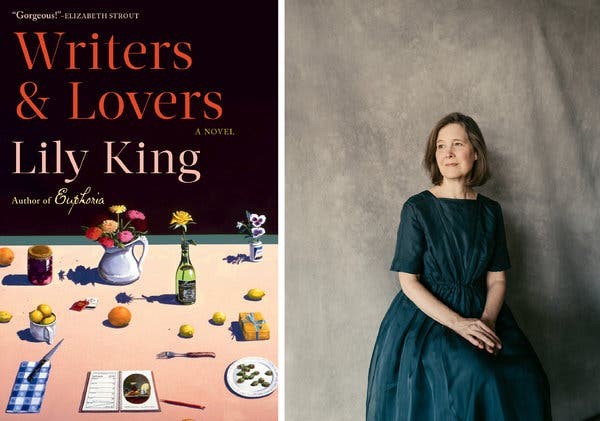
Ann Patchett
‘Writers & Lovers,’ by Lily King
“Writers & Lovers” made me happy. Even as the narrator grieves the loss of her mother and struggles to make art and keep a roof over her head, the novel is suffused with hopefulness and kindness. Lily King writes with a great generosity of spirit. —Ann Patchett’s most recent novel is “The Dutch House.”
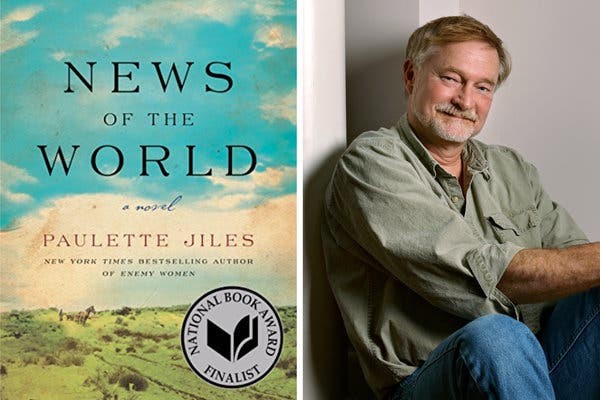
Credit…Benjamin Benschneider
Erik Larson
‘News of the World’ by Paulette Jiles
Capt. Jefferson Kidd, a hard-traveled army veteran, makes his living reading newspapers to paying audiences in post-Civil War Texas, ordinarily a reasonably safe pursuit — until he agrees to take custody of a young orphan, Johanna, newly rescued from her Kiowa captors, in order to deliver her to her surviving relatives. As Capt. Kidd and Johanna travel across an increasingly perilous Texas landscape, the two form one of the quirkiest, most satisfying friendships in modern literature. —Erik Larson’s most recent book is “The Splendid and the Vile.”

Credit…Elena Seibert
Min Jin Lee
‘Cousin Bette,’ by Honoré de Balzac
Love is the antidote to fear, and few have written better about love than Honoré de Balzac. “Cousin Bette” is juicy, immersive and terribly knowing about the feeling which connects us through time and distance. —Min Jin Lee’s most recent novel is “Pachinko.”
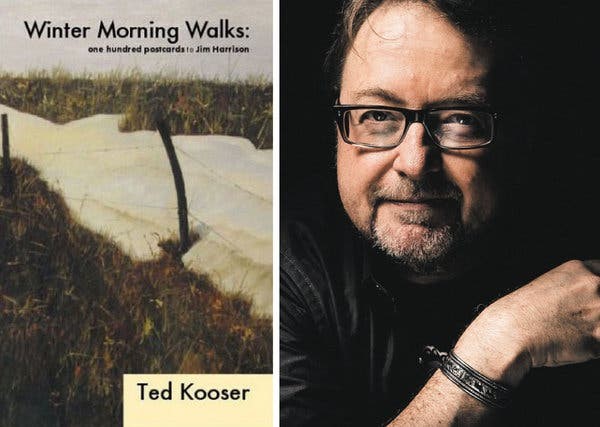
Credit…Joe Mazza
Luis Alberto Urrea
‘Winter Morning Walks,’ by Ted Kooser
When trouble comes, I often turn to poetry. I find myself drawn over and over to Ted Kooser’s slender holy book “Winter Morning Walks.” When he was recovering from cancer, he could not be in sunlight, so he walked before dawn that winter and sent Jim Harrison 100 tiny poems about the daily walk. It will bring you grace abundant. —Luis Alberto Urrea’s most recent novel is “The House of Broken Angels.”
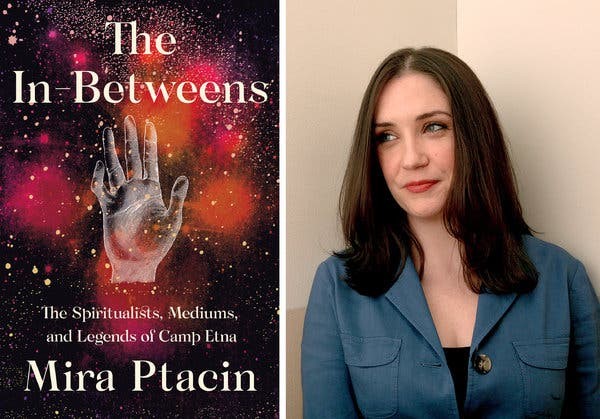
Credit…Chester Higgins Jr./The New York Times
Courtney Sullivan
‘The In-Betweens,’ by Mira Ptacin
“The past several nights, during those rare moments not spent refreshing Twitter for the latest news, I’ve gotten lost in the pages of Mira Ptacin’s ‘The In-Betweens.’ It’s the fascinating true story of Camp Etna, a 150-year-old community of spiritualists and mediums, hidden deep in the woods of Maine. Ptacin has a curious, warm, nonjudgmental tone about her, and she’s funny, too. She makes for delightful company. She sets a beautiful scene, of women living in gingerbread cottages, hunting ghosts and helping spirits cross into the light. Thinking about past lives and reincarnation and centuries spent on the astral plane somehow makes a month or so of social isolation seem like not such a big deal after all.” — J. Courtney Sullivan’s most recent novel is “Saints For All Occasions.”

Credit…Christopher Capozziello for The New York Times
Amy Bloom
All English mysteries prior to 2005. All of Jane Kenyon. All of Jane Hirshfield, especially her latest, “Ledger,” especially “A Ream of Paper.” Both Janes understand the world in all its happiness, melancholy, unpleasant surprise and moments of resilience. —Amy Bloom’s most recent novel is “White Houses.”
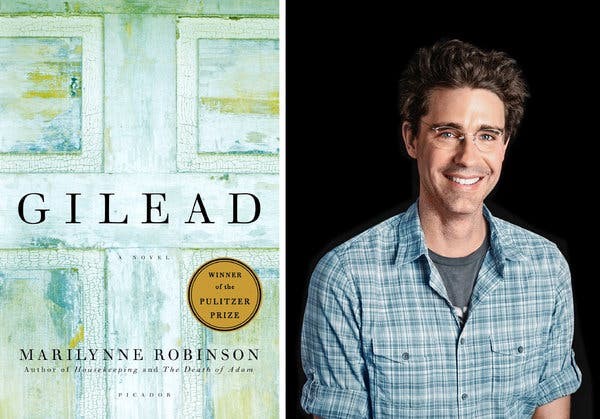
Credit…Beowulf Sheehan
Joshua Ferris
‘Gilead,’ by Marilynne Robinson
I would suggest a pairing: Emerson’s essays with Marilynne Robinson’s novel “Gilead.” Both of these bright, kindred voices soothe me like a milk-fed baby, as they shore up against pessimism without ever being timid or false. —Joshua Ferris is the author of “The Dinner Party.”
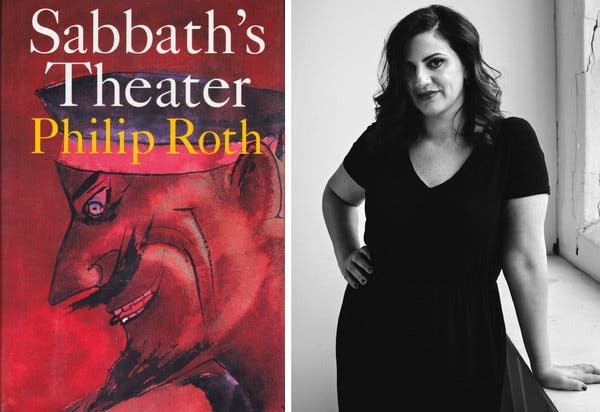
Credit…Erik Tanner
Taffy Brodesser-Akner
‘Sabbath’s Theater,’ by Philip Roth
I was just tag-team rereading “Anna Karenina” and “Sabbath’s Theater,” mostly because they are soothing reminders to me that beneath all this external crisis, our souls are still wretched and needy and require their own antibiotics and Purell and masks and toilet paper. Everything I see coming out now, including book recommendations, are about pandemics and surviving them. But our personhood is still here underneath it all, and it will be after all of this is over, so let’s not forget to tend to that, too. —Taffy Brodesser-Akner is the author of “Fleishman Is in Trouble.”
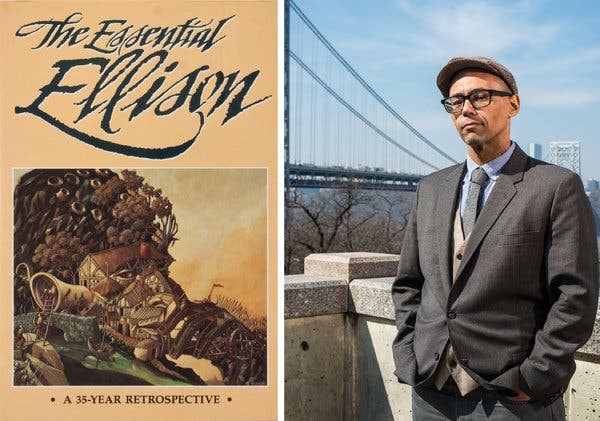
Credit…Teddy Woolfe
Victor LaValle
‘The Essential Ellison,’ by Harlan Ellison
Being in the house with our two kids has us digging into the books that made us fall in love with reading when we were younger. “The Essential Ellison,” a retrospective collection of Harlan Ellison’s short stories, is a book I found as a teenager and have returned to ever since. Science fiction, fantasy, horror, the stories are as brilliant, prickly, humane and sometimes problematic as the man himself. I can read one quick, while the kids eat lunch. Then it’s back into our current apocalyptic reality. —Victor LaValle’s most recent novel is “The Changeling.”
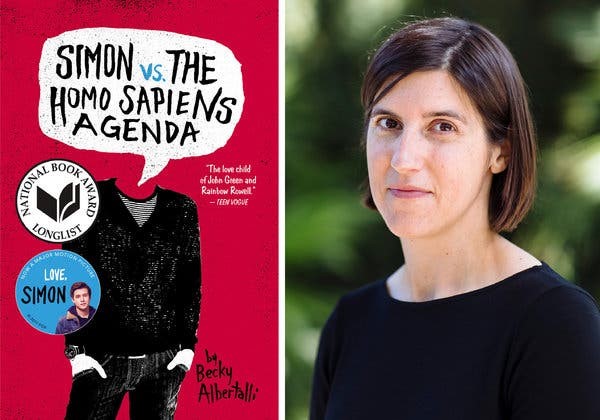
Credit…Whitney Curtis for The New York Times
Curtis Sittenfeld
‘Simon vs. the Homo Sapiens Agenda,’ by Becky Albertalli
This Y.A. novel features two boys who attend the same Atlanta high school, start an email correspondence without knowing each other’s identities and fall in love. It’s incredibly warm, romantic, funny and even suspenseful, and the emails themselves are charming. Also, “Yes Please” by Amy Poehler. Poehler’s reflections on life are, not surprisingly, funny, but they’re also insightful, moving and honest about struggles and mistakes. —Curtis Sittenfeld’s most recent novel is “Eligible.”
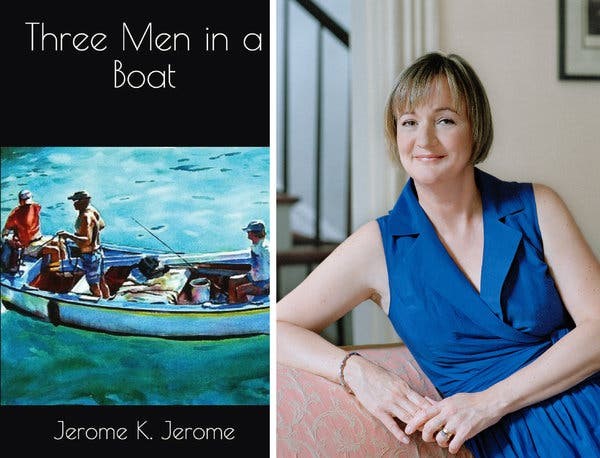
Credit…Nina Subin
Helen Simonson
‘Three Men in a Boat,’ by Jerome K. Jerome
As our lives must temporarily shrink to the confines of home, I search for patience and good sense in the gentle, healthful climes of Jane Austen, where intelligent, witty women must do fierce battle with the constraints of their lives. “Persuasion” is my favorite, and it never gets old to watch Anne Elliott, considered too old for marriage, balance her sense of honor and duty against a burning desire to rekindle old love.
And for those of us trying to shop a suggested two weeks of food, without resorting to the dreaded hoarding, may I recommend the victualing lists of Jerome K. Jerome’s 1889 comic hit, “Three Men in a Boat.” It takes an entire chapter to outfit a large rowing boat for three bumbling chums about to row up the river Thames for a fortnight. From cold meat and strawberries to butter and pies, not to mention a paper umbrella and a frying pan wrapped in brown paper, the hampers pile up as the local shop boys jeer: “Ah! You’d want to take a thing or two with you…if you was a-going to cross the Atlantic in a small boat.” It’s a salutary lesson in comic excess we can take with us on our search for canned tuna and toilet paper. —Helen Simonson’s most recent book is “The Summer Before the War.”

Credit…Nina Subin
Tayari Jones
‘The Color Purple,’ by Alice Walker
My go-to comfort novel is “The Color Purple,” by Alice Walker. Even though it touches on difficult subject matter like child abuse and forced marriage, this story believes that human kindness, courage and love can defeat any challenge. Its big, beautiful happy ending is heartfelt and hard-won. Every single time I read this book, I walk away as a slightly better person than I was when I picked it up. —Tayari Jones’s most recent book is “An American Marriage.”
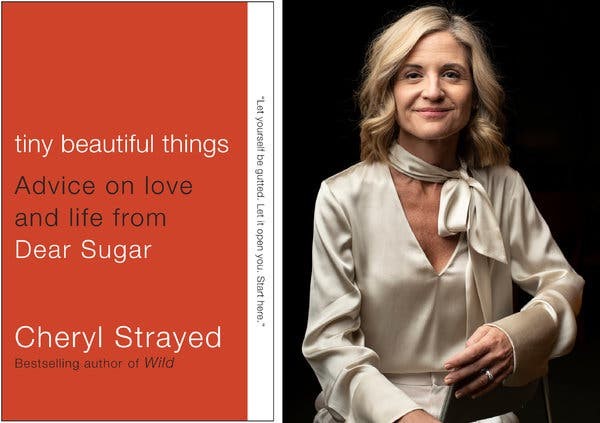
Credit…Karsten Moran for The New York Times
Glennon Doyle
‘Tiny Beautiful Things,’ by Cheryl Strayed
In stressful times I want the truth, but I want it hopeful and calm. I want to feel both leveled with and wisely guided. So, I come back to Cheryl Strayed’s “Tiny Beautiful Things” when I’m panicky. Each digestible response from Sugar slows my heart back down. —Glennon Doyle’s most recent book is “Untamed.”

Madeline Miller
‘Fingersmith,’ by Sarah Waters
When I’m in need of book comfort, I can never predict which one of my old favorites is going to do the trick. It might be my well-foxed copy of epic rabbit adventure, “Watership Down,” or I might prefer to escape to Elizabeth von Arnim’s acerbic and delight-filled story of four women discovering themselves in Italy, “The Enchanted April.” Or maybe I want something that gives voice to history with strength and courage: Julia Alvarez’s potent “In the Time of the Butterflies,” or the piercing, elegiac beauty of Julie Otsuka’s “The Buddha in the Attic.”But after checking on friends and family, stocking up and canceling everything, I found myself someplace else entirely: in the sweat-seamed stews of Sarah Waters’s gripping Dickensian masterpiece “Fingersmith.” It’s such a twisty headlong story that I can tell you very little about it without running into spoilers, except to say that it has everything needed to distract you from constantly refreshing news updates: a sweep-you-off-your-feet narrative voice, outrageously effective suspense, Victorian horrors, erotic thrills, complicated characters, mysteries and double-crosses and triple-crosses, and even a hopeful ending. I know every one of its twists from previous reads, but the book never fails to ensnare me, and as a bonus, if isolation starts to chafe, the historically accurate asylum scenes will surely keep things in perspective. —Madeline Miller’s most recent novel is “Circe.”
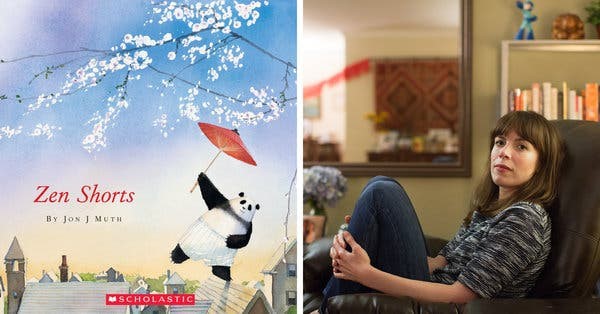
Credit…Elizabeth D. Herman for The New York Times
Lucy Kalanithi
‘Zen Shorts,’ by Jon J. Muth
“Zen Shorts” is a children’s book of three short stories, beautifully illustrated, that provides a warm reminder about the generosity and equanimity required in challenging times. My 5-year-old daughter and I both find it perennially comforting and inspiring, no matter the situation, and in these days of shelter-in-place and rapid health-system mobilization, we’ll definitely snuggle up to read it again. —Lucy Kalanithi, a clinical assistant professor at the Stanford School of Medicine, is the widow of Paul Kalanithi, the author of “When Breath Becomes Air.”
